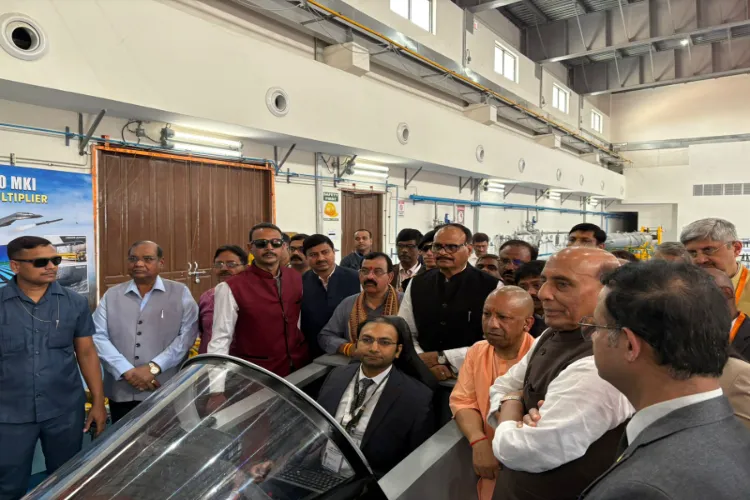
Lucknow
Defence Minister Rajnath Singh on Saturday witnessed a BrahMos virtual strike through the Indian Air Force's SU-30 fighter jet at the BrahMos aerospace production unit in Uttar Pradesh's Lucknow.
Singh also flagged off the trucks displaying the first batch of locally manufactured BrahMos missiles. Uttar Pradesh Chief Minister Yogi Adityanath and Deputy CM Brajesh Pathak accompanied the Defence Minister.
Singh, along with Adityanath, planted a sapling in the premises of the BrahMos Aerospace unit and also inaugurated the Booster and Warhead building.
On this occasion, Defence Research and Development Organisation (DRDO) chief Samir V Kamat and Brahmos Director General (DG) Jaiteerth R Joshi handed over the GST Bill of Brahmos Manufactured at the Lucknow unit to Singh and Adityanath.
This comes months after Prime Minister Narendra Modi announced that Brahmos missiles will now be manufactured in Lucknow.
Addressing a public meeting in Uttar Pradesh's Varanasi in August, PM Modi had commended India's air defence system, which countered Pakistani drones and missiles during the military operation.
He had said, "During Operation Sindoor, the world saw the capabilities of our indigenous weapons. Our Air Defence Systems, missiles, and drones have proved the strength of 'Atmanirbhar Bharat', especially the Brahmos missiles. Brahmos missiles will now be manufactured in Lucknow."
BrahMos, designed by the DRDO and NPO Mashinostroyeniya, a Russian defence company, made a significant impact on Pakistan's military infrastructure during Operation Sindoor following the ghastly Pahalgam terror attack.
The missiles were used in a big way to hit Pakistani air bases and Army cantonments all along its length and breadth during the four-day conflict.
Earlier, Prime Minister Narendra Modi praised the performance of the indigenous weapon systems in the conflict, saying, "During Operation Sindoor, the world saw the capabilities of our indigenous weapons. Our Air Defence Systems, missiles, and drones have proved the strength of 'Atmanirbhar Bharat', especially the Brahmos missiles."
In the first phase of the conflict, when India launched attacks on terrorist infrastructure in Pakistan, including the terror headquarters of Jaish e Mohammed and Lashkar e Toiba in Pakistani Punjab province, the BrahMos missile was the main weapon of choice for the Indian Air Force, which hit targets with great precision.
READ MORE: Anwar Mehdi gave up AMU job to keep Sherwani alive
The BrahMos caused further damage to Pakistani air bases, and hence the Pakistan Army tried to retaliate, protecting the terrorists and their infrastructure.
